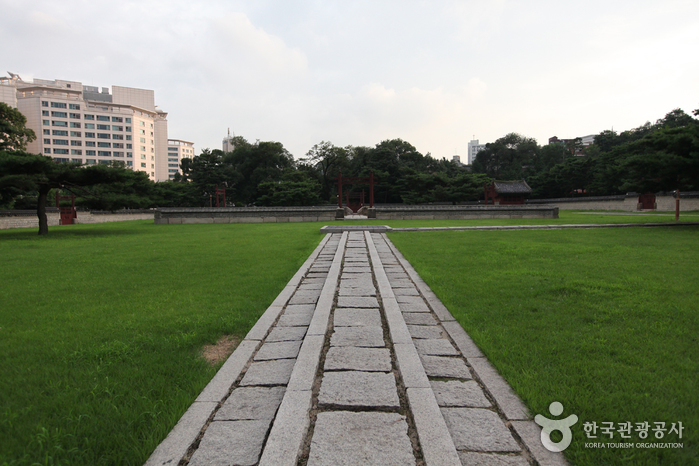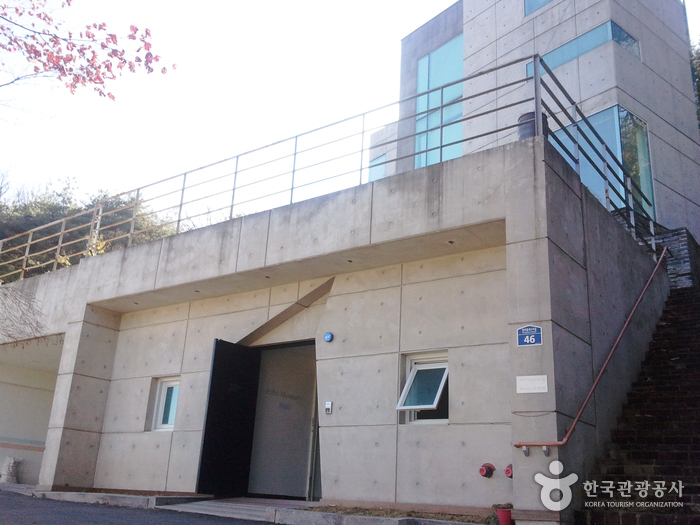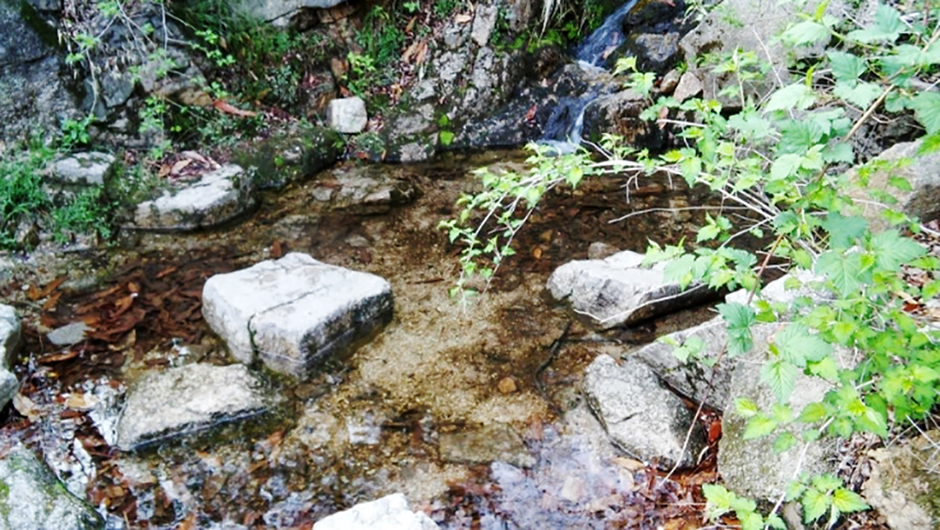Korea Postage Stamp Museum (우표박물관(구.우표문화누리))
6.5Km 2024-03-06
B2, 70, Sogong-ro, Jung-gu, Seoul
+82-2-6450-5600
The Korea Postage Stamp Museum was established to promote stamp culture. Here, visitors can explore the history of stamps throughout the ages, with a wide variety of subjects and types. Its main facilities include Postal Service History, Hands-on Postage Stamp Experience, Informative Postage Stamps, and Philately Classroom. Reservations are required for weekend tours and can be made on the website.
Louis Bon - Myeong-dong Branch [Tax Refund Shop] (루이본 명동)
6.5Km 2024-04-22
#101, 37, Toegye-ro 20-gil, Jung-gu, Seoul
-
Seoul Sajik Park (사직공원(서울))
6.5Km 2021-11-12
89, Sajik-ro, Jongno-gu, Seoul
+82-2-2148-4149
Sajik Park is one of the three most popular parks in Jongno-gu along with Tapgol Park and Samcheong Park. Located west of the Government Complex-Seoul on the southeastern foothills of Inwangsan Mountain, the park measures an impressive 188,710 m².
The name of the park dates back to 1395 when Taejo Yi Sung-gye made Sajik Altar (altar to the State deities) at the center of the park. "Sa" refers to the deity of the earth while "jik" refers to the deity of the five grains. Rites wishing for a good harvest were held regularly at Sajik Altar.
In the park are several playgrounds, statues of Sin Saimdang, Hwanghakjeong, and Yulkog Yi I, and the Municipal Children's Library. Dangun Shrine and Jongno Library are situated nearby. By following the path next to Sajik Park for approximately 5 minutes, travelers can reach the Inwangsan hiking path with relative ease.
Hanjeongsik Daemun (한정식대문)
6.5Km 2024-03-19
139-6 Sirubong-ro, Dobong-gu, Seoul
+82-2-956-0843
Hanjeongsik Daemun is a traditional Korean restaurant known for its set meals featuring nutritious pot rice and around 15 side dishes made with natural ingredients. Their main menu includes ganjang gejang jeongsik (soy sauce marinated crab set menu), bori gulbi jeongsik (barley-aged dried yellow croaker set menu), and jeonbok galbi jjim jeongsik (braised abalone and galbi set menu). They offer a variety of Korean table d'hote courses such as sura jeongsik (royal kitchen course table) and teuk jeongsik (special course table), each consisting of 5-6 special dishes, all at reasonable prices. Located in a renovated hanok, next to the Banghak-dong Catholic Church.
Mongmyeoksanbang (목멱산방)
6.5Km 2024-03-07
71, Toegye-ro, 20-gil, Jung-gu, Seoul
+82-2-318-4790
Situated near Namsan Mountain, Mongmyeoksanbang specializes in bibimbap. Mongmyeok is the ancient name of Namsan Mountain. Bibimbap is a bowl of rice tossed with various vegetables, meat, sesame oil, and red chili paste, making it a nutritionally balanced dish. Their dishes are made with natural seasonings and seasonal herbs gathered from Jirisan Mountain. The soybean pasete and soy sauce are also handmade, and perilla oil and sesame oil are 99.9% natural, without artificial ingredients.
Zaha Museum (자하미술관)
6.5Km 2021-03-09
46, Changuimun-ro 5ga-gil, Jongno-gu, Seoul
+82-2-395-3222
Located in Buam-dong, Jongno-gu, Zaha Museum is the highest art gallery in Seoul. Reaching
the museum involves a bit of an uphill walk, but the breathtaking scenery that includes Bugaksan Mountain and Inwangsan Mountain makes it worth the effort.
Opened on March 1, 2008, the two-story museum exhibits experimental works of young artists. There are two exhibition halls and a small garden on the second floor with a great view of the mountains.
Bongchu Jjimdak Myeongdong Post Office (봉추찜닭 명동중앙우체국)
6.5Km 2024-03-12
47, Myeongdong, 8na-gil, Jung-gu, Seoul
+82-2-3789-9381
Located in Myeongdong Street, Bongchu Jjimdak Myeongdong Post Office branch specializes in jjimdak (braised chicken). Jjimdak is a Korean-style soy sauce glazed chicken that originated in the Andong region and features chicken stir-fried with potatoes, carrots, onions, garlic, glass noodles, and rice cakes. Their signature dish is ppyeo eomneun jjimdak (braised boneless chicken), which is easy to eat even for beginners. Its spicy level can be adjusted and cheese can be added to suit personal preferences.
Suseongdonggyegok Valley (수성동계곡)
6.5Km 2023-08-17
185-3, Ogin-dong, Jongno-gu, Seoul 서울특별시 종로구 옥인동
Suseong-dong Valley's stream runs down from Inwangsan Mountain and joins Cheonggyecheon Stream, and it is said that the name of the village was called Suseong-dong during the Joseon dynasty due to the loud and clear sound of the flowing water. It appears in the painting "Jangdong Palgyeongcheop," which is Jangdong Eight Scenic Views, that depicts the eight scenic views of Bugaksan Mountain and Inwangsan Mountain as well as in other historical books of the Joseon dynasty as a place of scenic beauty. The valley was so famous for its beauty, that Prince Anpyeong of the Joseon dynasty built his house "Bihaedang" to fully enjoy the view, and the valley and its stone bridge were designated as a cultural property of Seoul in 2010.
Bank of Korea Money Museum (화폐박물관)
6.6Km 2024-03-18
39 Namdaemun-ro, Jung-gu, Seoul
This Renaissance-style three-story stone building is the museum of the Bank of Korea. The older Bank of Korea was established as the central bank of the Korean Empire in 1909 and has been designated as a National Historical Site. During the Japanese colonial period, the bank was renamed the Bank of Joseon, and the building was used as the main and head office of the Bank of Korea until 2001. The building has been used as the nation’s Money Museum since June 2001 in celebration of the 50th anniversary of the Bank of Korea. The museum has 13 exhibition rooms on two floors, with one basement floor and two above-ground floors. It holds special exhibitions of various currency and art collections to provide domestic and foreign visitors with the opportunity to enjoy the history and culture of currency. Visitors can learn about the Bank of Korea and the central banking system, as well as how to identify counterfeit notes and how money is produced and circulated. It is also a good place for children to learn about currencies from around the world. Advance reservations are required, and parking is not available. The museum can easily be reached via subway by getting off at Hoehyeon Station (Seoul Subway Line 4) and exiting through Exit 7.
Davich Optical - Myeongdong Branch [Tax Refund Shop] (다비치안경 명동점)
6.6Km 2024-06-27
62, Sogong-ro, Jung-gu, Seoul
-

![Louis Bon - Myeong-dong Branch [Tax Refund Shop] (루이본 명동)](http://tong.visitkorea.or.kr/cms/resource/50/2889050_image2_1.jpg)





![Davich Optical - Myeongdong Branch [Tax Refund Shop] (다비치안경 명동점)](http://tong.visitkorea.or.kr/cms/resource/98/2878598_image2_1.jpg)
 English
English
 한국어
한국어 日本語
日本語 中文(简体)
中文(简体) Deutsch
Deutsch Français
Français Español
Español Русский
Русский